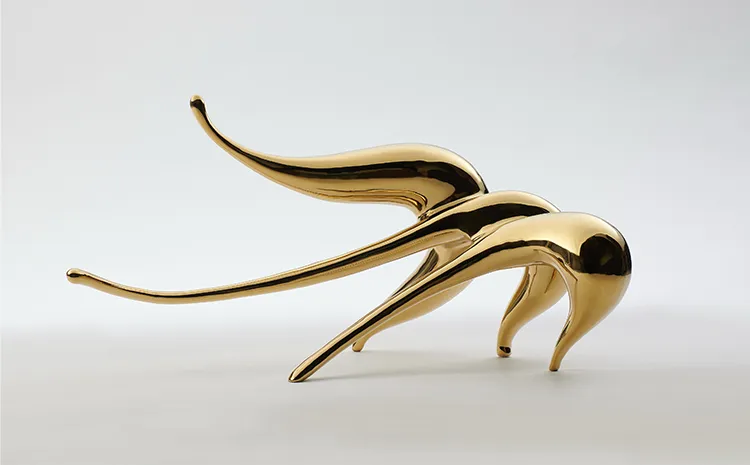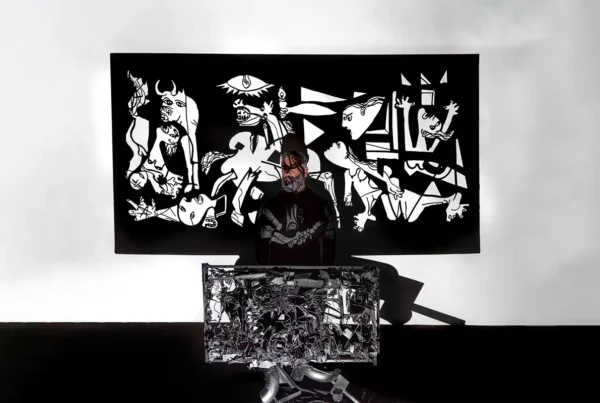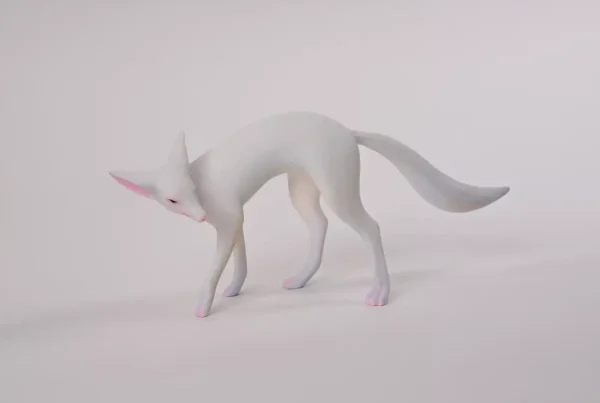“Sculpture is to interpret the beauty of light and shadow, rhythm and volume through the visual techniques of color, shape, and texture.”
From Lukang to the World: Jason Shih’s Journey
Jason Shih’s journey began in the culturally rich town of Lukang, Taiwan, in 1972. Known for its traditional crafts, Lukang shaped his early aesthetic sensibilities. As a young boy, he moved to Taipei City, where he attended the special fine art class programs of Minzu Elementary School, Minglun Junior High School, and Zhongzheng High School. These programs offered him exposure to diverse forms of art, including sketching, watercolor, oil painting, printmaking, design, and pottery, totaling an additional 10 hours per week of fine arts training from grades 3 through 12. This intensive training provided him with 10 years of fine arts education before he even entered university.
His formal education in art commenced at the National Taipei University of the Arts in 1991, where he majored in sculpture under the mentorship of Professor Lee Kuang-yu, culminating in a Bachelor of Fine Arts degree in 1996.
After completing his military service, Shih sought advanced training in the United States. He enrolled in the School for American Crafts at the Rochester Institute of Technology, where he studied under the esteemed sculptor Leonard A. Urso. This period was crucial for his development, earning his Master of Fine Arts degree in metal sculpture in 2001. His subsequent role as an assistant to Albert Paley, a renowned metal sculptor, further honed his skills in crafting large-scale public art.
Upon returning to Taiwan in 2002, Shih embarked on a prolific career in public art, creating over 80 large-scale installations across the island. His international engagements included residencies at the Wangsan Kaitian Festival in South Korea, JamFactory Contemporary Craft and Design in Australia, and the New Taipei City Gold Museum. Balancing his creative pursuits, Shih also achieved academic milestones, earning a Ph.D. in Sculpture and Public Art from the China Academy of Art and an MBA from National Taiwan Normal University.
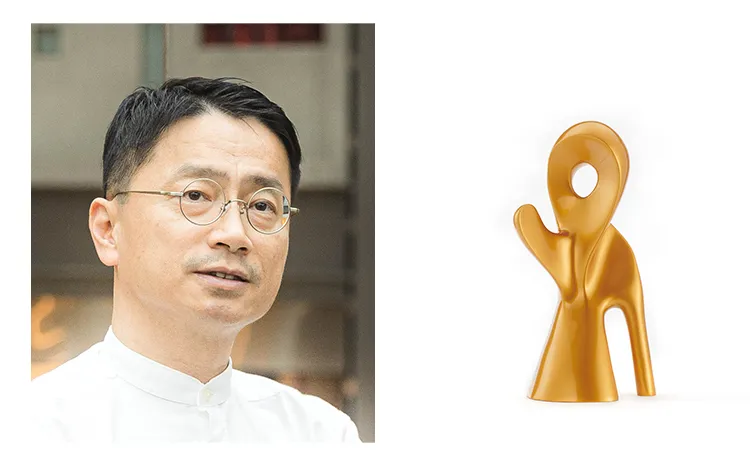
Jason Shih: The Essence of Sculpture
For Jason Shih, sculpture transcends mere physical form to capture the ephemeral beauty of light, shadow, rhythm, and volume. His artistic statement reflects a profound commitment to evoking emotional resonance through his work. Shih’s sculptures are imbued with a sense of nostalgia, drawing on sensory memories of temperature and smell to create an intimate connection with the viewer. This approach transforms abstract concepts into tangible experiences, allowing audiences to immerse themselves in the poetic interplay of light and form.
Shih’s creative process is deeply rooted in his sensory observations of life. He finds inspiration in everyday moments, translating these into sculptures that convey a rich tapestry of moods and stories. His works often evoke the serene yet dynamic qualities of natural elements such as the sea breeze and mountain mist, capturing the transient beauty of these phenomena. Through his art, Shih seeks to condense and record the essence of time and space, creating pieces that resonate with viewers on a deeply emotional level.
One of Shih’s notable works, “Turning,” exemplifies this philosophy. Crafted from cast stainless steel and coated with titanium, the sculpture captures the graceful, fluid motion of wind gliding over water. The piece is a testament to Shih’s ability to infuse his sculptures with a sense of kinetic energy and elegance, evoking the delicate balance and harmony found in nature.
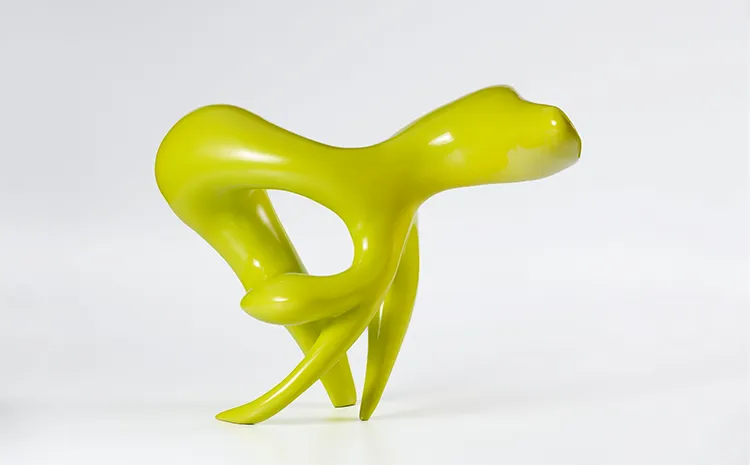
Thematic Simplicity and Humanistic Depth
Jason Shih’s artistic style is characterized by a simplified aesthetic that distills complexity into purity and elegance. His abstract sculptures reflect a deep humanistic thinking derived from Eastern sentiments, combined with the expressive techniques of contemporary visual art. Shih’s work is notable for its dramatic tension and attention to detail, achieving a balance between simplicity and grandeur that engages viewers on multiple levels.
Shih’s sculptures often explore themes of human experience and emotion, using form and color to convey profound insights into the human condition. His piece “Dawn at Sea,” for instance, is a vivid portrayal of hope and renewal. Made from painted ABS, the sculpture depicts the emergence of dawn over the ocean, symbolizing the promise of a bright future. Through slender, fluid forms, Shih captures the dynamic interplay of light and water, creating a lyrical representation of nature’s beauty.
Another significant work, “Summer Flowers • Autumn Leaves,” draws inspiration from Rabindranath Tagore’s poetic reflection on life and death. The bronze sculpture captures the duality of existence, portraying life’s vibrant energy alongside the serene acceptance of mortality. Shih’s ability to convey such deep philosophical themes through his art underscores his mastery of the medium and his profound connection to the human experience.
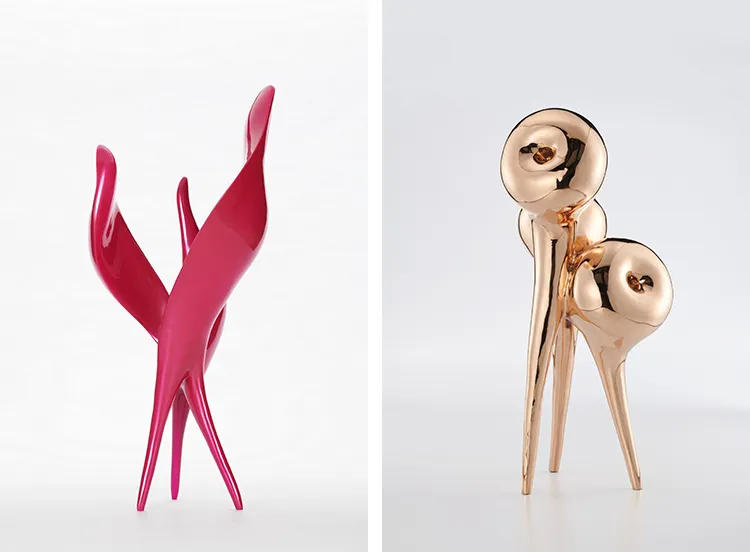
Jason Shih: Influences and Inspirations
Jason Shih’s artistic vision is shaped by a diverse array of influences, from contemporary dance to avant-garde fashion. He cites German choreographer Pina Bausch and British designer Alexander McQueen as significant inspirations. Bausch’s explorations of time and space resonate with Shih’s interest in sculpture’s capacity to embody kinetic energy and spatial imagination. McQueen’s innovative approach to contemporary imagery and themes provides Shih with a broad canvas for creative expression.
Shih’s work is also influenced by the aesthetic principles of Futurism and Constructivism, movements that emphasize dynamic energy and continuous motion. These influences are evident in his pursuit of capturing the beauty of movement and the elegant restraint of natural forces. Shih’s sculptures often depict moments of defying gravity, capturing the fleeting beauty of motion in a static form.

One of Shih’s favorite pieces, “Turning,” exemplifies this dynamic energy. The sculpture’s flowing lines and smooth surfaces create a sense of movement and fluidity, embodying the artist’s fascination with the interplay of kinetic forces. Through his work, Shih continues to push the boundaries of sculpture, exploring new ways to express the inherent dynamism of the natural world.
